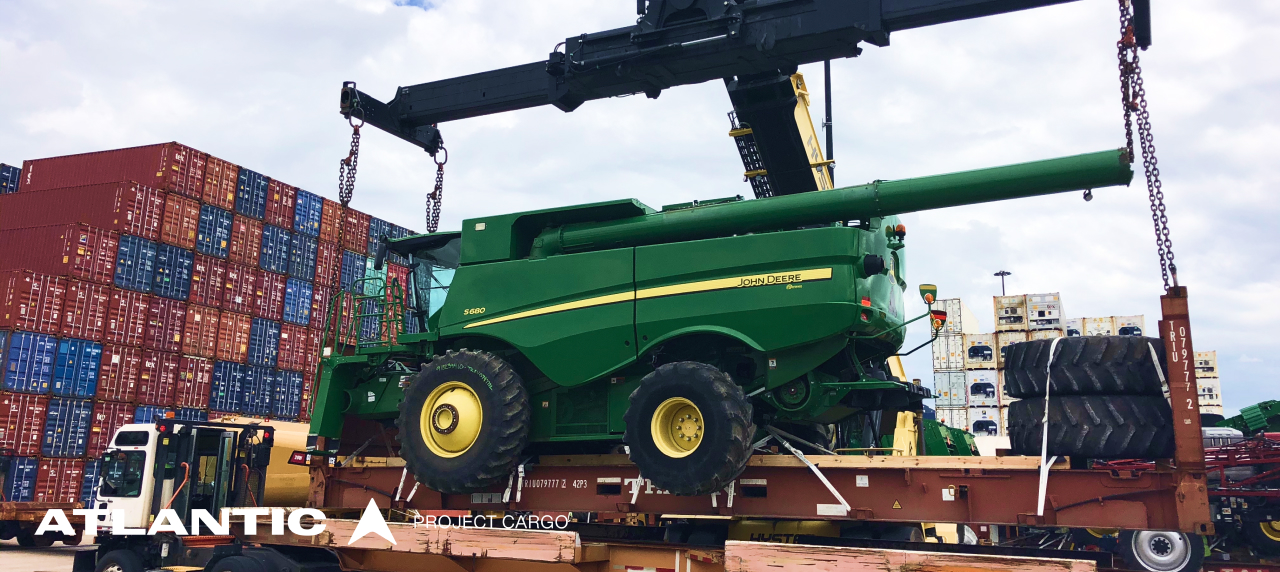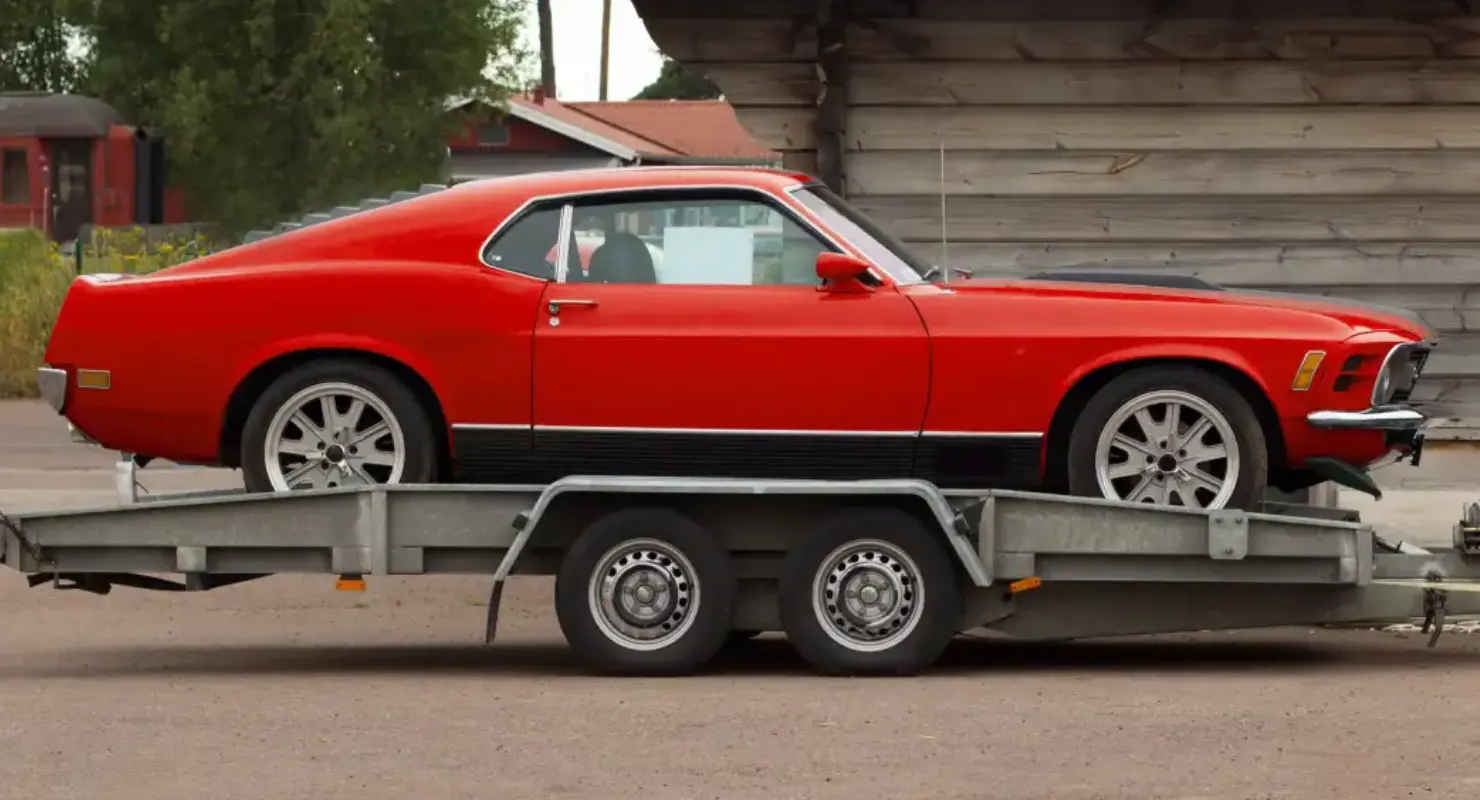
Shipping heavy machinery is a complicated task and it requires a versatile approach. Every inch and pound translates to logistical complexities and potential cost increases. For companies specializing in this domain, finding the most affordable shipping solution is not just a desire, it’s a necessity.
A multitude of factors, from the nature of the cargo itself to the chosen route and mode of transport, influence the final cost. This article aims to clear up the key considerations and strategies that can help you identify the most cost-effective approach for your specific oversized cargo needs.
Whether you’re dealing with massive industrial equipment, construction machinery, or agricultural equipment, you will explore the various options and unlock the secrets to efficient and affordable oversized cargo shipping.
What Factors Affect the Cost of Shipping Heavy Machinery?

Shipping heavy machinery is a complex process, and several factors can influence the final cost you’ll pay.
Weight and Dimensions
This is the most significant factor impacting shipping costs. The heavier and larger your machinery, the more expensive it will be to transport. For example, shipping a compact tractor from Hamburg(Germany) to Los Angeles(USA) would cost cheaper, than shipping a farm tractor.
Distance
The distance your machinery needs to travel directly impacts the cost. Shipping zones and mileage are often used to calculate shipping rates, with longer distances resulting in higher charges. If you are shipping a farm tractor from Hamburg to Los Angeles, the price would be lower, than if you ship from Shangrao(China) to Los Angeles.
Type of Machinery
Specific types of machinery might require special handling or permits due to their size, weight, or potential hazards. This can lead to additional charges. A standard trailer can handle a forklift’s weight and dimensions, costing around $3-4 per mile. An excavator, however, might require a specialized lowboy trailer which can run $5-9 per mile due to its size and weight.
Shipping Method
The chosen shipping method significantly affects the cost. Flatbed trucking or railroad are generally the most affordable options, while enclosed trailers and ocean freight comes at a higher price. But in most countries shipping OOG by rail is not an option. Air cargo is another option, but it costs way more and it’s preferable for spare parts.
Additional Services
Getting additional services like insurance, tracking, or expedited shipping can add to the overall cost. While these services offer valuable benefits, consider whether they are necessary for your specific shipment to avoid unnecessary expenses.
Fuel Costs
Fluctuations in fuel prices can impact shipping costs, especially for long-distance transport.
Remember, comparing quotes from different shipping companies and exploring various shipping options is crucial for finding the most affordable solution for your specific heavy machinery transport needs.
Atlantic Project Cargo can take the stress out of shipping your machinery. Contact us today for a free quote!
How to Choose the Right Shipping Method for Your Heavy Machinery?

There are three main ways to ship heavy equipment: by ocean, ground, or air. Each method has its advantages and disadvantages, and the best option for you will depend on the size and weight of your equipment, as well as the distance it needs to travel.
Container Shipping
Container shipping is a good option for moving large machinery and bulky items across long distances, both domestically and internationally. Construction companies frequently use containers to transport equipment quickly and efficiently. This is the most affordable option but requires disassembly in most of the cases.
Containers come in various sizes and types, including open-top, flat-rack, and refrigerated containers. This variety allows for a good deal of flexibility in shipping a wide range of equipment. Additionally, containerized cargo is easy to load and unload, thanks to standardization.
Some equipment might be too big to fit inside a container. In these cases, you may need to disassemble the machinery before shipping and then reassemble it at its destination, which can be time-consuming and labor-intensive.
Lift-On/Lift-Off (LoLo)
The LoLo method uses cranes to load and unload containerized cargo on and off ships. These cranes are typically mounted directly on the vessels. While LoLo shipping is efficient for large cargo, it often requires a specialized crew to operate the cranes, which can add to the cost.
Since cargo is lifted on and off with cranes, there’s less chance of damage during loading and unloading compared to RoRo.
However, it’s important to remember that LoLo might not always be the most cost-effective option.
Roll-on/Roll-off (RoRo)
The RoRo method is the easiest way to transport equipment that can be driven. With RoRo, vehicles simply drive on and off the ship under their power. This method can save time and money, but it requires additional space for the RoRo carriers needed to load and move the cargo at the ports.
While RoRo shipping offers advantages, its applicability is restricted to operational equipment. Additionally, the geographic reach of RoRo carriers is generally more limited compared to traditional container carriers.
Flat Racks
Flat racks are a popular choice for shipping oversized equipment. These heavy-duty platforms come in various sizes and can hold up to 83,500 lbs of cargo weight. They’re ideal for bulky items that protrude beyond the dimensions of a standard container.
Flat racks are typically 20 or 40 feet long and come in collapsible and non-collapsible options. They can also be equipped with walls for added security. Flatbed trucks equipped with cranes or forklifts are often used in conjunction with flat racks to safely load and unload heavy equipment. However, too massive equipment can’t be loaded on flatbed trucks with “piggybank” cranes.
Flat rack containers offer a versatile solution for transporting oversized or oddly shaped machinery that needs to be loaded from the top or side. The steel construction of flatbed trucks ensures a strong base for your cargo, while tarpaulins can be used to protect fragile items during transport.
Railway Transportation
Railways remain a vital part of transporting bulky cargo across long distances. They offer a cost-effective and efficient method for shipping heavy machinery, especially for large and very heavy pieces.
There are two types of railcars used for heavy machinery:
- Flatcars
These are the most common type, similar to flatbed trucks but often larger to accommodate oversized cargo - Well cars
These have depressed centers to allow for extra-tall machinery
Air Freight
Air freight is more expensive, because of the weight and size limitations of airplanes. Very large and extremely heavy machinery may not be possible to transport by air.
Among the reasons why you might choose to use air cargo shipping are:
- The urgent need for machinery
- High-value of machinery and importance of extra security
- Machinery is fragile and needs to be protected
- No viable alternative shipping options
While cost is a crucial factor when shipping heavy machinery, several other considerations can impact the success and efficiency of your shipment. Let’s explore some additional factors to keep in mind:
Insurance
Heavy machinery represents a significant investment, and it’s crucial to insure it during transport. Accidents and unforeseen events can occur, and having proper insurance coverage will protect you from financial losses. Usually, insurance includes such aspects as:
- Physical Cargo Loss or Damage
- General Average Mitigation In Case of Major Accidents
- War and Strike Risks
- Worldwide Coverage
- Container Damage
Permits and Regulations
Depending on the type of machinery and the shipping route, you might need to obtain specific permits and adhere to various regulations. This can include obtaining oversized or overweight permits, complying with emissions standards, permits for hazardous materials, or meeting specific safety requirements.
Safety and Security
Choosing a reliable shipping company with a good safety record is paramount. Ensure they have the necessary experience and expertise to handle your specific type of machinery.
Planning and Preparation
Proper planning and preparation can significantly reduce costs and avoid delays. This includes:
- Accurately measuring and weighing your machinery
- Preparing the machinery for transport by securing loose parts and draining fluids
- Providing clear and detailed shipping instructions to the carrier
- Obtaining all necessary permits and documentation in advance
Communication and Tracking
Maintaining clear communication with the carrier and tracking your shipment’s progress is essential for ensuring a smooth and successful delivery.
Customs Clearance
If you’re shipping heavy machinery internationally, be aware of customs regulations and requirements. Ensure you have all the necessary documentation and work with experienced customs brokers to facilitate clearance and avoid delays.
Atlantic Project Cargo can assist with insurance, permits, customs clearance, and much more. Contact us today, and we will help with your heavy equipment shipping.
How to ship heavy equipment via ocean freight?
Conclusion
Heavy machinery shipping requires careful consideration of multiple factors, from the characteristics of the cargo itself to the available transport options and the ever-changing landscape of regulations.
While there is no “one-size-fits-all” solution, by understanding the key cost drivers and employing strategic planning, you can significantly optimize your heavy cargo shipping expenses.
At Atlantic Project Cargo, we’re experts in shipping all sorts of heavy machinery. Whether you need to transport construction equipment, agricultural machinery, or oversized industrial parts, we can help you navigate the process and find the most efficient and cost-effective solution for your specific needs. Contact us today to get your heavy equipment shipping quote!
Read More


